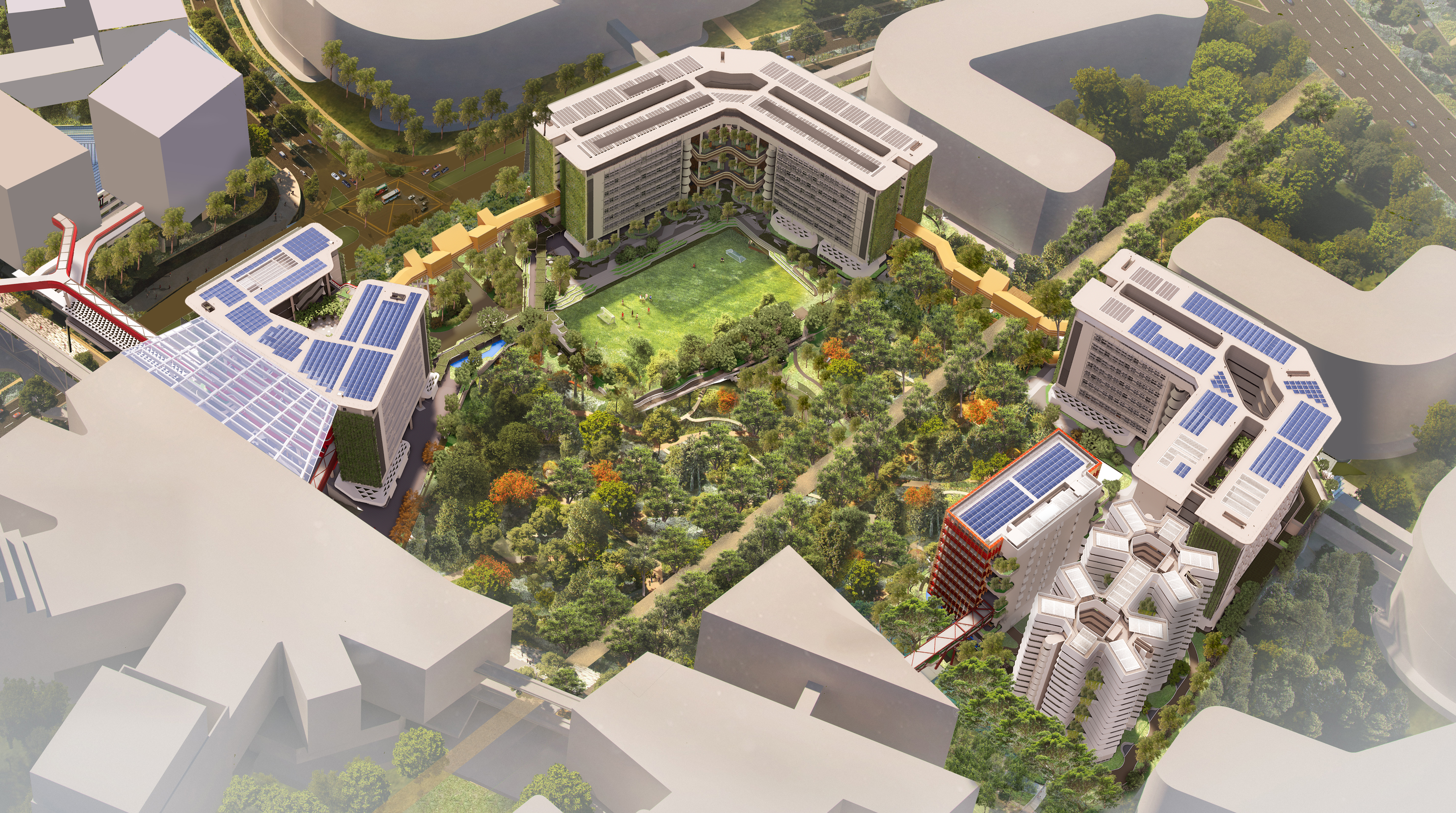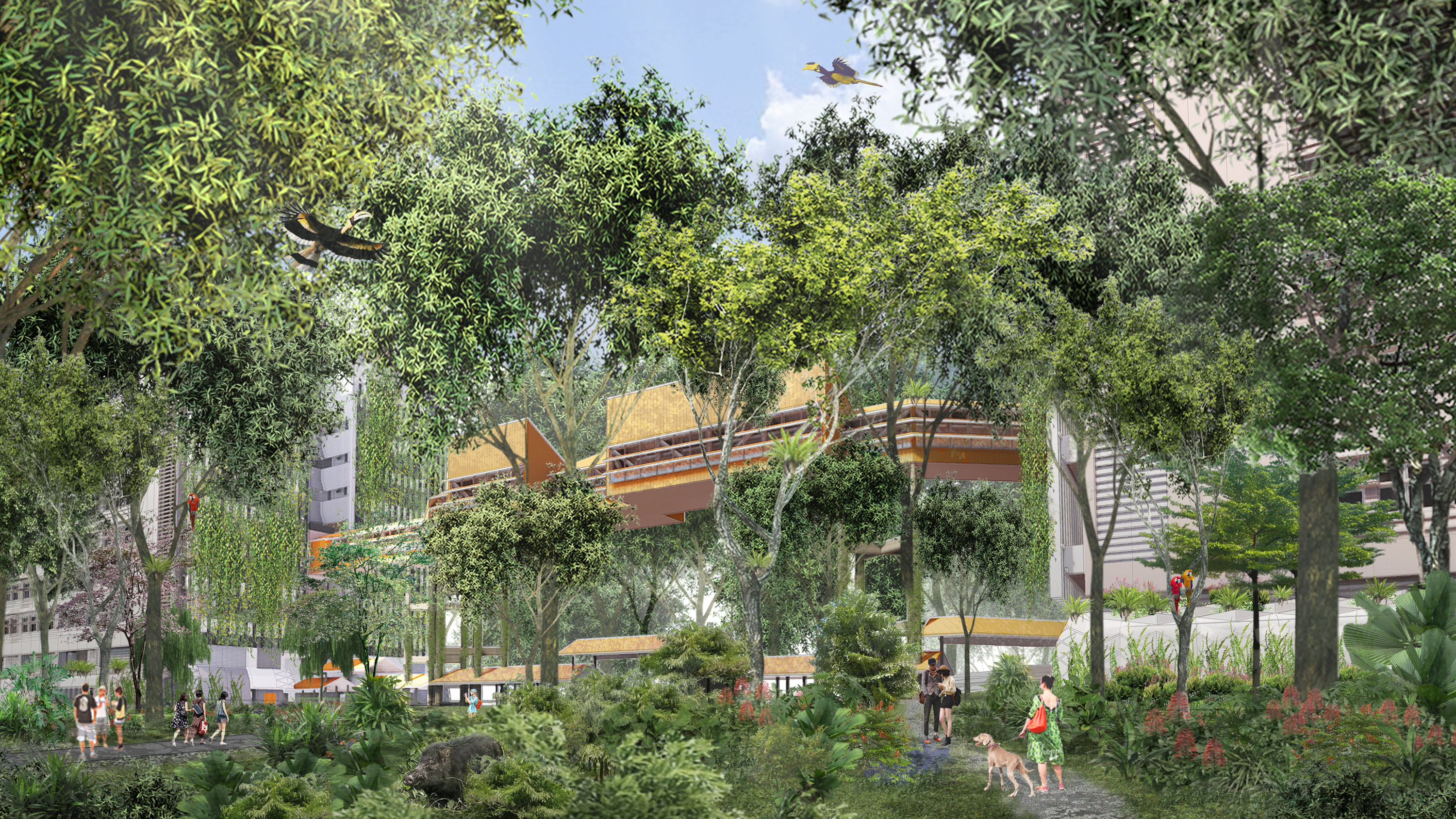Those living in the north and northeast of Singapore will soon have a more accessible tertiary education option.
The new centralised campus of the Singapore Institute of Technology (SIT) will be located at Punggol.
It began construction on Sept. 10, 2019 after a groundbreaking ceremony of the campus.
SIT currently has six distributed campuses, with the main campus situated in Dover.
The upcoming Punggol campus, to be completed in 2023, will be the first of its kind in the northeast.
There are presently no universities located in the northeast region of Singapore.
Huge campus and surrounded by greenery
The new SIT campus will take up a whopping 91,000 sq m, around the size of 17 football fields, according to a press release by SIT.
It will also be able to accommodate 12,000 students, compared to the 8,000 students each at SIT's distributed campuses at five polytechnics and its Dover campus.
The new campus will overlook the waterfront.
The existing forest along Punggol Road will also be preserved, to lend the university a "campus-in-a-park" feel.
 Photo courtesy of SIT
Photo courtesy of SIT
There will also be a Canopy Walk five floors above the park and linking two academic blocks.
 Photo courtesy of SIT
Photo courtesy of SIT
Accessible to public
The campus will be accessible not just to SIT students and faculty, but to the public too.
The Campus Boulevard will be furnished with retail shops and F&B outlets, and is designed for active mobility options such as walking and cycling.
The forested Punggol Road will also be transformed into a Heritage Trail, which will connect Punggol Waterway Park to the Punggol Promenade Park Connector.
 Photo courtesy of SIT
Photo courtesy of SIT
Visitors and students can even enjoy a waterfront view with retail and dining options.
A large event space will be constructed as well, called the Nexus, and will eventually be integrated with the future Punggol Coast MRT station.
Co-located with JTC buildings
The new campus will be built in the heart of the Punggol Digital District (PDD), Singapore's first "smart district".
Situated right beside and integrated with JTC business park buildings, the plan is to allow students and faculty staff to collaborate with industry leaders on projects.
The campus' strategic location enables students to test out their technology and ideas in the PDD, enabling them to go to market faster.
Nearby companies can also access SIT's talent pool, as well as utilise the campus' research capabilities.
Smart and sustainable campus
SIT's Punggol campus will be defined by cutting-edge technology.
The entire campus will be wired with a network of over 10,000 smart sensors.
The sensors are able to collect information on temperature, ambient light and human presence data.
Such information will be shared with an Integrated Building Management System (IBMS), which can control lifts, lighting, air-conditioning and security via the decentralised Internet-of-Things (IoT).
The data will then be analysed using artificial intelligence or data analytics to control the building's systems via IBMS, in order to obtain the optimum environmental conditions and efficiency.
The Punggol campus will also rely on green energy.
A total of 10,000 sq m of photovoltaic solar panels will be installed on the rooftops.
The electricity generated will supplement the campus' power supply, reducing reliance on the main power grid and improving sustainability.
Top photo courtesy of SIT
If you like what you read, follow us on Facebook, Instagram, Twitter and Telegram to get the latest updates.
